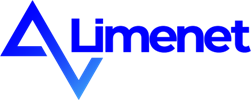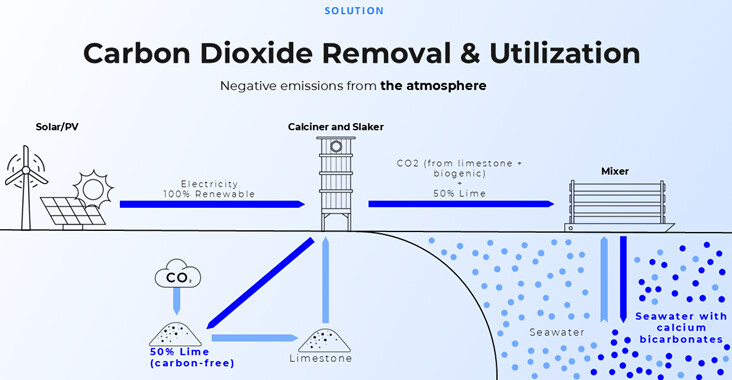Description of the Company
LIMENET is a company that was established in Italy in 2023 by Stefano Cappello, Giovanni Cappello, Enrico Noseda and Valdis Bisters. It uses marine CDR through a technology called pH-equilibrated ocean alkalization. This marine CDR technology offers ‘environmental co-benefits’ as it combats ocean acidification and incorporates carbon capture and storage. In addition, being ‘scalable to Gtons’ due to its ‘modular nature’, ‘globally deployable’ and ‘cost-effective’, it offers other advantages. It currently has 17 employees.
CDR Support
LIMENET has received a grant of €200k for a project that has ‘valorized its patents’ from Invitalia, an Italian public agency established as a body of the Italian Ministry of Economy and Finance. However, this grant is not CDR-specific as the scope and prospect of CDR methods are not yet fully understood and recognized by Italian authorities..
This situation has been exacerbated by the often stringent and complex conditions associated with European grant applications compared to those in the US. Limenet, like many European CDR startups, has found it necessary to seek external expertise to navigate the intricacies of these applications. The selection processes can be particularly burdensome and highly competitive, creating significant hurdles for emerging companies in the rapidly evolving CDR sector to secure the crucial early-stage funding needed for growth and innovation. This complexity can inadvertently slow down the development and deployment of vital carbon removal technologies within Europe.
In addition, public funding programs specifically aimed at start-ups in Italy often require a solid financial structure in order to access financing or grants. This requirement is fundamentally at odds with the typical nature of a start-up, which in its first one to three years usually generates little to no revenue and depends heavily on both private and public investment. This is especially true for start-ups like Limenet, which require significant upfront capital expenditure (CAPEX) before generating any income. As a result, a paradox emerges—a sort of vicious cycle—where the very criteria meant to support start-ups end up excluding them, leaving much of the allocated public funding unused and ineffective in supporting the very businesses it was designed to help.
CDR Market
The company participates in the voluntary carbon market and its main clients are in the climate finance sector. In 2024, Limenet stipulated its first pre-commercial contract with KlimaDAO, selling 1,000 tonnes of carbon removal credits.
CDR Regulations
There were no CDR-specific requirements that were in place when the company started its operations. Lack of CDR-specific legislation left the company with no choice but to follow the standards developed by multiple private entities. In this regard, the company is benefitting from standards developed by the Isometric registry, in compliance with ISO 14064-2. In the CDR market, there are also other registries that are developing their own CDR standards, like Puro, Verra and Gold Standards.
CDR Outlook
LIMENET has encountered three main challenges since its inception. Firstly, it has encountered difficulties when seeking to receive operational permits owing to the complexity and outdated nature of the regulatory framework governing its activities.This framework fails to accommodate innovative technologies like pH-equilibrated ocean alkalization, lacking a separate classification for such advancements. Secondly, the absence of a global carbon tax incentivizes high-emitting companies to relocate outside the EU rather than reduce their emissions, creating a competitive disadvantage for LIMENET. Third, the CDR market is an ‘emerging’ market that suffers from ‘low commercial demand and regulatory uncertainty.’ Consequently, investors are ‘hesitant’ as the market is still immature and unpredictable.
Despite these hurdles, the company plans to expand globally, targeting Europe, Oman, Chile and Morocco. According to the company, ‘the future of CDR looks promising thanks to growing opportunities and an increasing number of stakeholders entering the field.’ In addition, ‘new platforms that connect CDR suppliers with regulators are being developed, facilitating better coordination and scaling.’ In addition, the company is of the view that the report that has been recently published by the European Scientific Advisory Board on Climate Change, ‘Scaling up Carbon Dioxide Removals - Recommendations for navigating opportunities and risks’, offers ‘a more comprehensive definition of methodologies related to Ocean Alkalinity Enhancement (OAE). This report emphasizes the potential contribution of such methodologies to carbon dioxide removal (CDR) strategies while also acknowledging the challenges and considerations associated with their large-scale implementation.
However, there are three main barriers to the deployment of CDR: ‘social acceptance, regulatory frameworks and measurement, reporting and verification (MRV)’. In this regard, the perception of CDR by some stakeholders ‘as a distraction from emissions reduction rather than a complementary solution’ tarnishes its social acceptance. According to the company, trust can be fostered through ‘transparency and education.’ Secondly, ‘the lack of clear, standardized regulations slows down adoption and investment, rendering policy support crucial for providing certainty to investors and stakeholders.’ Lastly, the company is of the view that ‘ensuring accurate and reliable MRV for carbon removal remains a challenge, particularly for ocean-based and soil-based solutions.’ However, it also highlights that the ‘development of MRV by different CDR suppliers and registries is helping to overcome this obstacle.’
Moreover, the company is facing a number of ‘political and policy uncertainties’ due to lack of ‘long-term commitment from governments, including CDR-specific financial incentives and subsidies’. In addition, it is concerned about the ‘possibility that shifting political priorities can delay or undermine CDR deployment.’
Nonetheless, LIMENET has identified several positive trends that can facilitate long term deployment. Firstly, ‘both public and private sectors are allocating more funding to CDR projects, accelerating research, development and commercialization.’ Secondly, ‘rapid technological innovations in areas like direct air capture (DAC), biochar and ocean alkalinity enhancement’ are ‘improving efficiency and reducing costs.’ Third, ‘companies are increasingly committing to carbon neutrality and incorporating CDR into their sustainability strategies.’ Lastly, ‘ongoing efforts to standardize measurement and verification methods will build credibility and attract further investments.’
CDR and Society
The company is committed to ‘guaranteeing transparency and integrity for all stakeholders, in particular the local communities that are directly impacted by its activities.’ To this end, it seeks to ‘generate local benefits by contributing to the mitigation of ocean acidification through the introduction of bicarbonates into the sea and by actively engaging in climate science outreach‘. The company uses these events to present the ‘causes and consequences of climate change, the role of CDR technologies in combating climate change and Limanet’s CDR solution.’ Crucially, ‘these events provide a forum for local residents to ask questions and share their perspectives on LIMENET’s technology.’
In Augusta, Sicily where Limanet ‘installed its first industrial plant’, it ‘engaged with the local authorities’ with the purpose of ‘presenting the project, getting feedback on it and securing approval to proceed.’ In addition, ‘the Local Authorities supported Limenet in engaging with the community and connecting with local associations’. Moreover, Limenet ‘organized two scientific outreach events with the local community.’ The company has provided the following description regarding the events:
‘The first event, Limenet Meets Augusta, was designed for the adult population and featured Associate Professor Stefano Caserini from the University of Parma. He discussed the causes and consequences of climate change and provided an overview of the potential role of CDR technologies in addressing this critical challenge. The event also offered a valuable opportunity for Limenet to present its project directly to local citizens and gather feedback.’
‘The second event, an educational program with A. Ruiz High School located in Augusta, had a dual objective: to promote scientific dissemination on climate issues and to offer students a guided tour of the LIMENET plant, explaining its operational principles firsthand.’
Through these proactive and multifaceted initiatives, LIMENET underscores its dedication to open communication, meaningful community involvement, and fostering a clear understanding of its operations.

